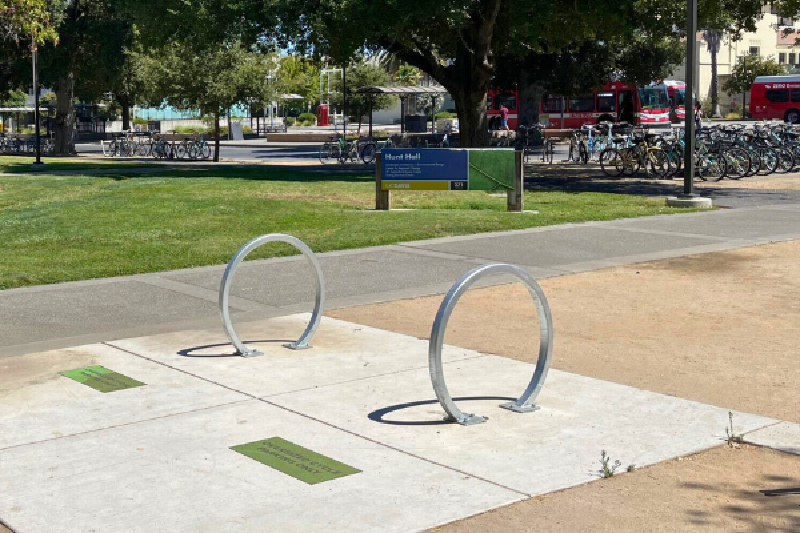At the best of times, roots are pretty hard work. They’re lumpy, hard, and often, downright scary. Slather them with a liberal film of wet and grease, and they can strike the fear of god into even the most capable of riders. However, with a hint of confidence and a healthy dashing of finesse, wet roots can be conquered. Here’s how.
If you ride in a forest, or anywhere that may have been a forest in a previous life, you will be riding over roots. In the dry, they’re mostly harmless features that’ll transfer a load of feedback into your hands and feet, so while they can look intimidating, you can get away with murder as you hurtle over them.
In the wet, however, roots are another ballgame, and they’re best avoided. Sadly, that’s just not how mountain biking, or gravel riding, works. You will have to ride over wet roots at some point in your riding career… but fret not, doing so needn’t be the puckering experience it generally (and rightfully) is.
Look up, scan the trail
I bang on about looking where you’re going in nearly every riding how-to you’ll find on this website, but I do so because it’s a simple but vital technique that’s easily forgotten as you’re navigating frightening technical sections. This is because keeping your vision up will give you the best possible chance of spotting notable trail features well in advance, thus giving you plenty of time to prepare for what’s about to come.
However, with roots, wet or dry, it’s even more important owing to their lack of grip. Once you spot a web of roots ahead, if you’ve spotted it well before your front tyre hits it, you’ll have given yourself loads of time to plan how you’re going to attack them.
Staring at only what is ahead of your front tyre is a recipe for failure, as features you won’t have spotted come up quickly and they’ll surprise you, especially when travelling at some speed.
Correct line choice can make or break your trip across roots
As with everything in off-road cycling, and mountain biking especially, line choice is key. But with wet roots, there’s a real theme of risk and reward, as it can be easier and faster to tackle one very nasty-looking root rather than bump your way through multiple, if that choice presents itself.
The truth is, no single root is the same. Some may literally be single roots, but often, in forests, they’re a collection of roots that splay across a trail, and that’s where proper line choice really comes into play.
Generally, you want to be hitting roots so that they’re perpendicular to your tires, so they’re as horizontal as possible. This will reduce any lapse in traction to the minimum it can possibly be, as the more time you spend riding on a wet root, the more time you’ll spend without any grip.
Now, with this in mind, you can apply it to multiple roots or webs of them. And roots like these often pose a clear(ish) choice. That’s because roots start somewhere, nearer the trees they feed, obviously. That means there are areas where the roots are closely packed, and others where they’re spread out more. Of course, this isn’t always the case.
Where multiple roots are more spread out, they’ll likely be a little flatter and more manageable. Then, as the gaps between them are larger, there will be more areas where you can find traction. However, such sections can be very lumpy, slow, and you could be riding through them for longer than you want, leaving more opportunity for less grip.
Where the roots are more closely packed, they might be larger, but the overall time of your tires going over them can be shorter. Therefore, any lapse in grip will be brief, and that root garden will be done and dusted. However, as these types of roots can often be bulkier, they might require a hop or an unweighting of the bike to get over them.
With roots, there is no wrong way to ride over them, just faster ways of getting them over with, and it’s worth experimenting to figure out what works best for you at your current skill level.
Stay loose
As you ride over wet roots, you will be losing traction, but you’ll quickly regain it if you stay loose and allow the bike to move underneath you. Combined with good technique (which we’ll get onto in a bit), staying loose on the bike will give you plenty of time and space to react to any wheel slippage.
Your body is also part of the bike’s suspension. If, like a suspension fork, you’re super stiff, you’ll severely limit any available traction and feel all of the feedback that’ll be transmitted from the ground to your body. Allowing the bike to rise and fall underneath will help you to eke out every ounce of grip you possibly can by letting the whole system (your body and the bike) conform to the terrain you’re riding. This applies not only to wet roots, but to all terrain.
If you’re riding a gravel bike without any kind of suspension, this becomes even more important.
Dial your technique
Cycling in the wet requires the bulk of your technique for a successful and fun ride. And as a bit of a continuation from the last point, it’ll help you manage any break in grip with time and space to move around the bike.
Specifically, I’m talking about cornering. Sadly, even corners can be infested with roots.
If you lean with the bike over wet roots, you’re going to have a bad time. Instead, employ proper cornering technique, lean the bike separately from your body, lower your outside (relative to the direction of the lean) pedal and lift your outside elbow.
Doing this will not only put weight into the grippy shoulder knobs of your tyres, but as the bulk of your body weight is over the bike, it’ll help your bike move underneath you should you slip and keep you on the bike, rather than tip you onto the ground. It’ll also give you space to manipulate the bike and work to regain traction.
In addition to a solid cornering technique, master your bunny hop and learn to unweight your bike. The former will effectively erase roots if you can simply hop over them. Unweighting the bike will reduce the weight you’re putting through it, thus reducing the chances of slipping on the roots.
Consider your bike setup
Unfortunately, there’s nothing you can buy that’ll fix slippery roots. Wet roots are slippery no matter what! There are a couple of setup tweaks that’ll help your bike manage them better, though.
Generally, roots are fairly high-frequency or fast-occurring impacts as your tyres roll over them, whether that’s just one singular root or many splayed out across the trail. In the dry, a faster rebound will help keep your wheels glued to the ground and absorb all of those high-frequency impacts. But in the dry, you will be travelling faster, and roots will be grippier.
In the wet, you’ll likely be going a little bit slower, and if you’re riding wet roots with a summer-like rebound setup, your suspension will be trying to extend, or return to full travel, before it rolls over the bump completely. This early extension can reduce traction and end in a nasty spill. So consider slowing down your rebound a touch to allow it to compress properly throughout the whole duration of the impact and return to full travel when it needs to.
It’s not just about rebound either, as dialing back the compression damping a click or two will help your suspension absorb the impact more freely. Having your compression damping too firm can, again, reduce traction and make for a more uncomfortable time.
As the primary contact patches with the ground, your tires could do with a bit of a tweak too. I’m not talking tread pattern or rubber compound, as roots provide next to zero mechanical or chemical grip regardless of your tire choice… I’m talking tire pressure.
Dropping your tire pressures by a few PSI will help your tires conform to the roots and help your bike track truer through them. Although this won’t necessarily enhance grip, reducing your tire pressure will help stop your tires from pinging all over the place and help you hold your line.
For gravel bikes, consider installing wider tires and tire inserts. Doing so will enable you to ride with lower tire pressures, which will make the bike more comfortable and help the tires conform around roots, all while protecting your rims.












